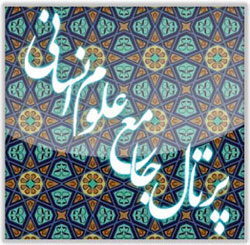Talent Identification in Sports Using the Adaptive Method of Core Indicators in Professional Athletes
Keywords:
athletic talent identification, adaptability, core indicators, professional athletes, thematic analysisAbstract
The present study was conducted with the aim of identifying athletic talent using the adaptive method of core indicators in professional athletes. This research is applied in terms of purpose and descriptive-analytical in terms of nature and method, utilizing a mixed-methods approach (qualitative-quantitative). The statistical population in the qualitative section included selected scientific articles from domestic and international databases, as well as academic experts and elite athletes. Sampling was conducted purposively, and data were collected through semi-structured interviews and analyzed using thematic analysis. In the quantitative section, the statistical population consisted of 36 professional and elite athletes selected using purposive sampling. Data were collected using a researcher-made questionnaire and analyzed using a one-sample t-test. The results indicated that athletic talent identification through the adaptive method of core indicators includes seven main dimensions (genetic, physiological, anthropometric, psychological, biological, living environment, and lifestyle) and 53 indicators. Of these, 46 indicators were in a favorable condition, while 7 indicators (having athlete parents, sitting height, lower limb length, pelvic width, thoracic circumference, abdominal circumference, and the use of university-educated professionals in talent identification centers) were in an unfavorable condition. The highest means were related to the indicators of intrinsic interest in competitive sports (4.47), physical health (4.42), and mental toughness (4.39). Athletic talent identification is a complex and multidimensional process that requires attention to a range of genetic, physiological, anthropometric, psychological, biological, and environmental indicators. To succeed in this process, a comprehensive and scientific talent identification system must be designed and implemented with the participation of academic experts and by considering all these indicators. Furthermore, special attention should be given to the indicators that are in an unfavorable condition, and appropriate plans should be developed to improve them.
Downloads
References
Abrefam, P., Kargar, G., Henari, H., Shabani Bahar, G., & Afouri, F. (2022). Designing a talent management model for table tennis in Iran. Sports Management Studies, 4(5). https://smrj.ssrc.ac.ir/article_3547.html?lang=en
Alavi, S. H., & Khosrpour, H. R. (2020). Formulating a strategic talent identification program for football in Mazandaran province.
Asadi, N., & Moradi, A. (2018). Investigating the barriers to talent identification in sports in the country.
Barron, P. (2011). Eduction and talent management: implications for the hospitality industry. International Journal of Contemporary Hospitality Management, 20(7), 730-742. https://doi.org/10.1108/09596110810897583
Dadgar, H. (2021). Investigating the role of mass media in developing talent identification for students with a focus on basic sports.
de Oliveira Abrahão, A. A., Marcos de Andrade Júnior, É., de França Ferraz, A., Hongyu, K., & Fett, C. A. (2022). Factor Analysis for detection of sports talent in football players. Saúde e Pesquisa, 15(1). https://doi.org/10.17765/2176-9206.2022v15n1.e9766
Eftekhari, A., Goharrastami, H. R., & Darvishi, A. (2019). Analyzing the factors affecting the development of successful talents in the first and second division of women’s futsal in Iran. Sports Management Studies, 11(55), 117-142. https://smrj.ssrc.ac.ir/article_1517_en.html
Eskandari Fard, E., Kargarfard, M., & Figueredo, A. (2020). Investigating the relationship between maturity, performance, and hormonal indices with game time in elite youth football players throughout the season. Sports Physiology, 12(48), 61-82. https://spj.ssrc.ac.ir/article_2269.html?lang=en
Haidar Eissa, D., Abdovi, K., Khodadi, M. R., Hamidi, M., & Abdul, Z. (2023). The impact of time management and the quality of the talent development system in volleyball on stakeholder satisfaction in Iraq. Scientific Journal of Applied Research in Sports Management. https://arsmb.journals.pnu.ac.ir/article_10048.html
Hajilo, B., & Anbaryan, M. (2023). Comparing anthropometric, physiological, psychological, and skill variables of elite and non-elite volleyball players for sports talent identification. Applied Biological Sciences in Sports Studies, 14(1), 21-35. https://jpsbs.birjand.ac.ir/article_2587.html
Hajinabi, K., Raeesi, P., & Ajag, N. A. (2013). The relationship between talent management and the performance of nursing staff in hospitals in the city of Karaj. Health Information Management, 10(7), 971-964. https://him.mui.ac.ir/article_11268.html?lang=en
Hosseini, A. H. (2013). The role of talent management in securing and retaining skilled human resources. Quarterly Journal of New Economy and Trade(23-24), 205-181. https://ensani.ir/fa/article/325042/
Kalani, A., Elahi, A., Sajadi, S. N., & Zarei, H. (2020). Developing a comprehensive talent identification model in elite sports in Iran. Research in Educational Sports, 8(2), 33-50. https://res.ssrc.ac.ir/article_1822.html?lang=en
Pourzarnegar, J. (2021). Analyzing the identification of sports talents in Gilan province using the SWOT model.
Ribeiro, J., Davids, K., & Silva, P. (2021). Talent Development in Sport Requires Athlete Enrichment: Contemporary Insights from a Nonlinear Pedagogy and the Athletic Skills Model. Sports Med, 51, 1115-1122. https://doi.org/10.1007/s40279-021-01437-6
Seifert, L., Papet, V., Strafford, B. W., Gogliani, A., & Davids, K. (2018). Skill transfer, expertise and talent development: An ecological dynamics perspective. Movement Sport Sciences(4), 39-49. https://doi.org/10.1051/sm/2019010
Shahi, L. (2018). Utilizing physiological and anthropometric indices in talent identification for women’s volleyball.
Siyahi, M., & Asghari Pour Dasht Bozorg, A. (2020). Evaluating and prioritizing effective indices in talent identification for badminton.
Talebzadeh, A., Farahani, A., Safania, A. M., & Amir Tash, A. M. (2023). Designing a sports talent management model in schools. Research in Educational SportsVL - 5(11), 45-75. https://res.ssrc.ac.ir/article_4090_3e5a2267bc1137034de25e55dce82546.pdf
Wang, C. L., & Pervaiz, K. (2016). Organizational learning: A critical review. The Learning Organization, 10(1). https://www.researchgate.net/publication/241698735_Organisational_learning_A_critical_review
Downloads
Published
Submitted
Revised
Accepted
Issue
Section
License
Copyright (c) 2025 Fatemeh Sajjadipour , Hossein Peymanizad, Javad Mohammadkhani, Meysam Rezaei (Author)

This work is licensed under a Creative Commons Attribution-NonCommercial 4.0 International License.







